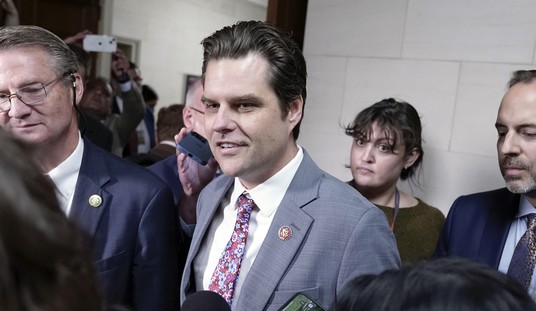The New York Times has embraced a brand of BLM radicalism that is morally obscene and breathtakingly intellectually dishonest.
NYT editor Nikole Hannah-Jones thinks she and other African-Americans are entitled to a (very) generous check from the U.S. government. She also thinks she and other African-Americans should be exempt from the laws the rest of us are obliged to follow. She makes her arguments in a lengthy (and tedious) essay in The New York Times Magazine titled “What is Owed,” but should have borrowed the rap title “Where Dem Dollas At?” (Gangsta Boo ft. DJ Paul and Juicy J).
The problem with all the BLM arguments I have ever seen for reparations is that they are based on flawed interpretations of history and even more serious misunderstandings of economics, law, and society. And BLM arguments about criminal justice are all based on a seriously dishonest representation of basic facts about law enforcement. But Hannah-Jones plumbs new depths of ignorance, deception, and moral depravity.
Both Black Lives Matter and Reparations Now are based on the theory that our primary identity and our personal destiny are almost entirely based on race. So, we are not Americans. We are not liberals and conservatives. We are not scofflaws or law-abiding citizens. We are not lazy or hard-working, smart or not so smart, wealthy or poor. We are either African-American, or not African-American.
And hence, every social and economic issue boils down to one and only one question: how does it affect African-Americans? There is so much wrong with her arguments that I have to divide my response into two parts. Today I address her outrageous views on criminal justice, then I will get to her flawed arguments for reparations.
Recommended
“It has been more than 150 years since the white planter class last called up the slave patrols and deputized every white citizen to stop, question, and subdue any black person who came across their paths… It has been 150 years since white Americans could enforce slave laws that said white people acting in the interest of the planter class would not be punished for killing a black person, even for the most minor alleged offense.”
It is true that slave patrols roamed the roads looking for runaway slaves, and that the slaves had virtually no legal rights. Ms. Hannah-Jones also recounts the horrors of life for blacks in the South in the years after the Civil War and emancipation, particularly the post-Civil War “Black Codes” that restricted the legitimate rights of the newly freed slaves. But then she decides to use the historical wrongs of slave patrols and 19th century racist Black Codes to disingenuously condemn modern-day American police as their moral equivalent.
“Those black codes were struck down, then altered and over the course of decades transmuted into stop-and-frisk, broken windows and, of course, qualified immunity,” she writes.
The policing strategy of “broken windows” is based on the idea that even in high-crime neighborhoods, police should enforce laws against misdemeanors like vandalism and public drinking. The theory, which has been proven in practice, is that a general atmosphere of lawlessness promotes more lawlessness. It is an effort to reduce serious crime in neighborhoods that suffer most grievously from rampant criminality. It also is simply applying the laws equally – no neighborhood is somehow exempt from the enforcement of our nation’s laws.
But for Hannah-Jones, subjecting African-Americans to equal enforcement of the law is no different from slavery and the “Black Codes". Stop-and-frisk is another strategy for making our cities safer. And “qualified immunity” is a well-established legal doctrine based on Supreme Court precedents, and absolutely essential for police to do their jobs. But she wants effective policing gone. Effectively, Hannah-Jones is calling for the abolition of law enforcement, at least for African-Americans.
She continues: “The names of the mechanisms of social control have changed, but the presumption that white patrollers have the legal right to kill black people deemed to have committed minor infractions or to have breached the social order has remained.”
This is simply a bald-faced lie. White police officers do not have any “legal right” to murder black people for committing “minor infractions” or for breaching the “social order.” Saying so in print, in The New York Times, is a libelous falsehood that deserves the most serious condemnation.
Then, her line of argument turns even more morally obscene.
“At least 6500 black people were lynched from the end of the Civil War to 1950, an average of nearly two a week for nine decades. Nearly black five people, on average, have been killed a week by law enforcement since 2015," she says.
Lynchings were typically public murders of innocent black men, usually by hanging and often led by the Ku Klux Klan, with the express intent of terrorizing the African-American community. Police kill about a thousand people a year, some of whom are African-American. And in the overwhelming majority of these cases, the men shot by the police were in the midst of committing serious, violent crimes and they were armed and dangerous. A very small number of these incidents were judged after-the-fact to have been mistakes; a minuscule number have been judged wrongful.
But that very real difference doesn’t matter for Hannah-Jones. A law-abiding father and husband is dragged from his home, a noose put around his neck, and hung in the town square, his body then set on fire is in her words no different from a murderer with a gun shot by police acting in self-defense and in defense of the community. Really, this woman has no sense of shame.
Now, part of her intellectual deception is to cite the very, very few African-Americans mistakenly or wrongfully killed by the police.
“We collectively know only a small number of their names: Michael Brown, Tamir Rice, Trayvon Martin, Kendra James, Breonna Taylor, Rekia Boyd, Eric Garner, Aiyana Stanley-Jones and Tanisha Anderson are just a few,” she writes.
It is noteworthy that she can only name nine, and only by going as far back as 2003. Twice as many people, 18, were killed on a single day in Chicago this summer. The sad fact is, a small number of mistaken killings by police is simply unavoidable, given the complexities of policing and the ever-present dangers police face. (This is a good analysis of the problem.)
Rather than face the reality that most African-Americans are killed by other African-Americans, Hannah-Jones uses a few cherry-picked examples of tragic mistakes by the police to paint a fundamentally misleading picture of criminal justice in America. And she appropriates the very real sufferings of the slaves and African-Americans terrorized by the KKK for her radical political project of immunizing armed criminals and exempting African-Americans from the laws of the land.
These kinds of deceptive twisting of the truth and outright lies have no place in a free and democratic society. And the radical BLM agenda Hannah-Jones is promoting is a direct threat to all law-abiding Americans. But when these kinds of malignant ideas are embraced by the establishment elites, there is a real and present danger to our Republic.


